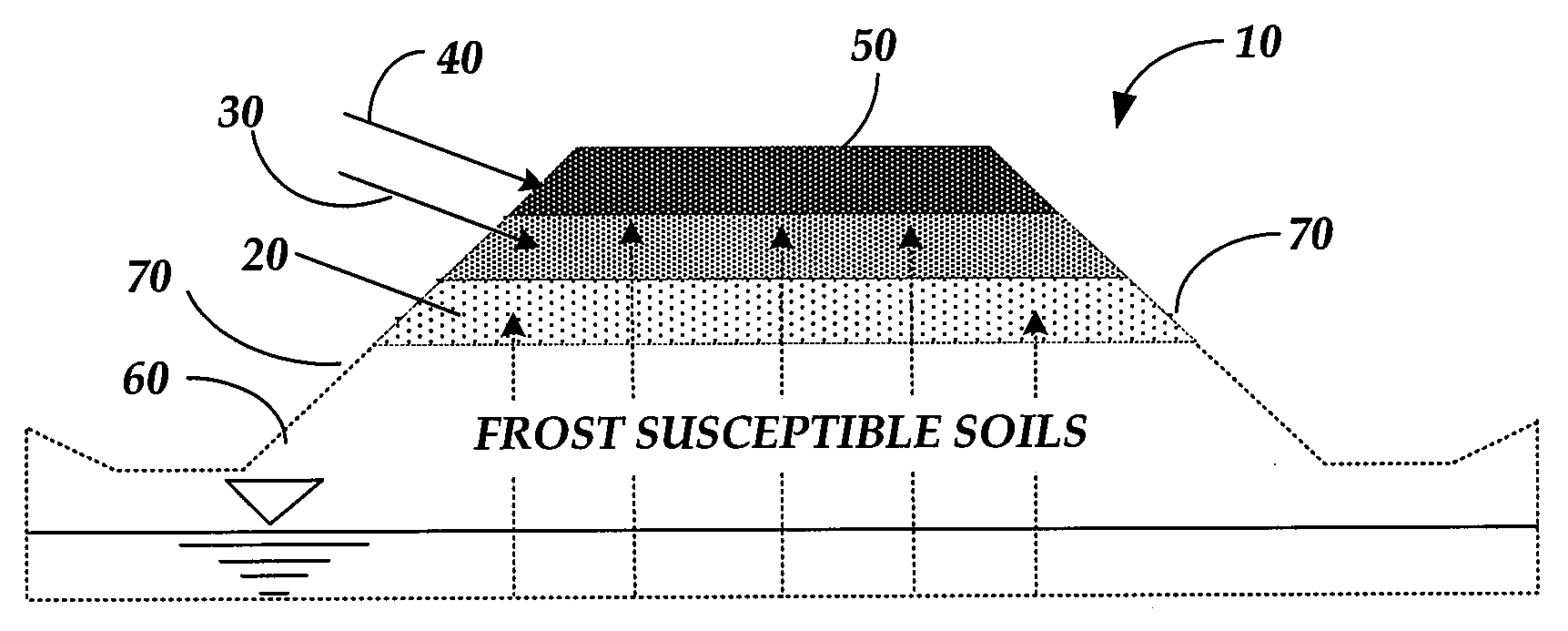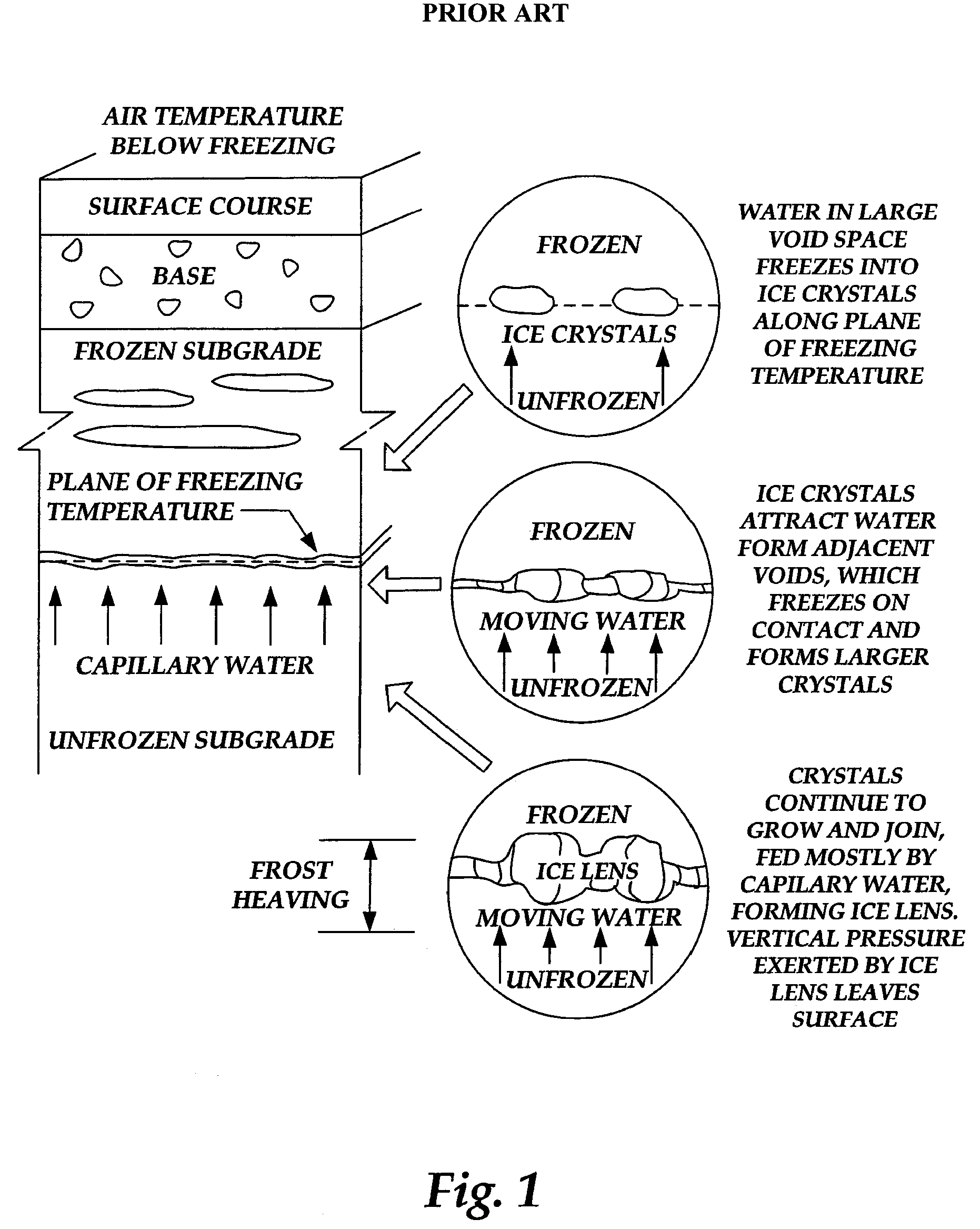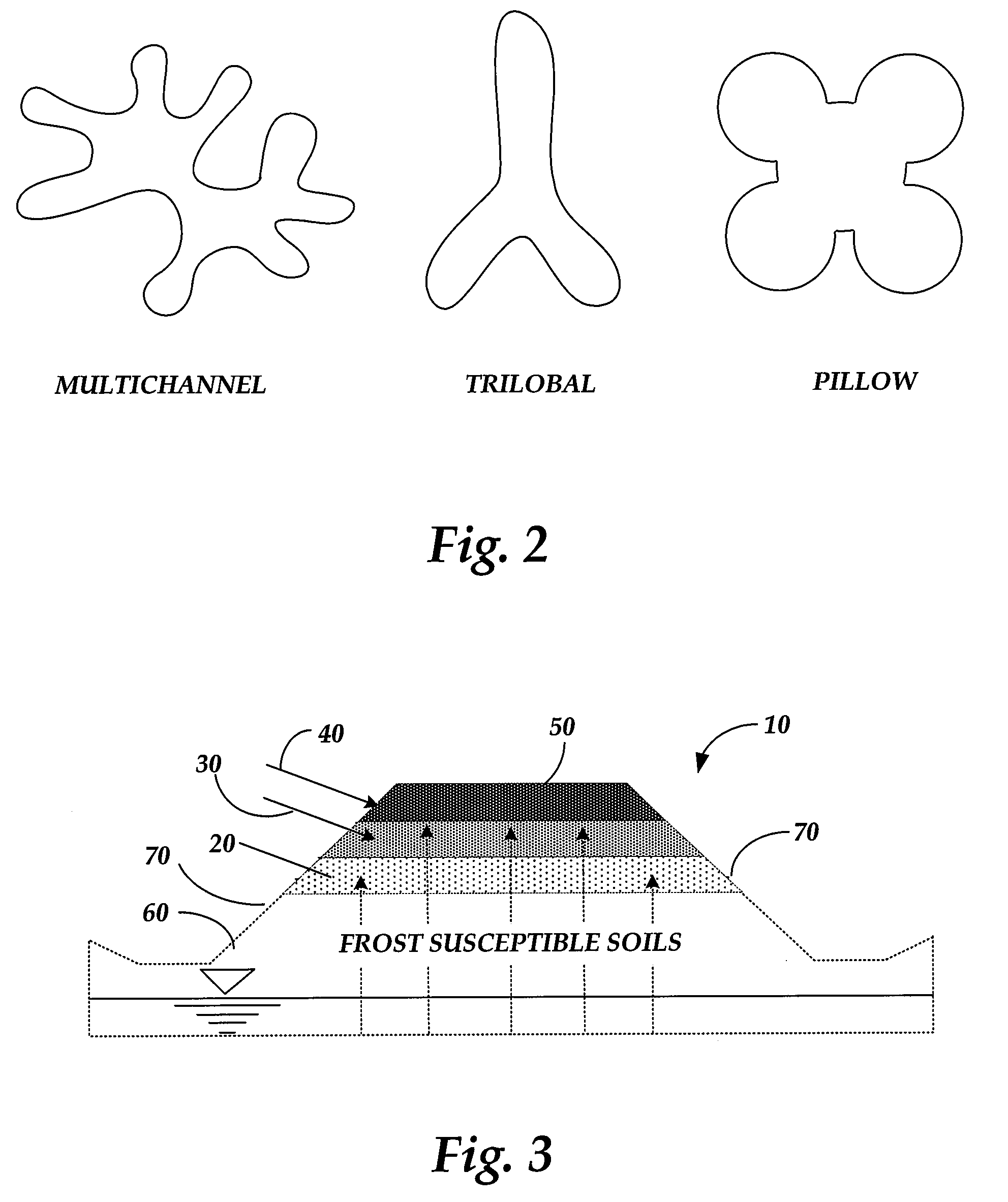Woven geosynthetic fabric with differential wicking capability
a geosynthetic fabric and wicking technology, applied in weaving, excavations, roads, etc., can solve the problems of nonwoven geotextiles as a capillary barrier, pavement structure damage, parking area damage, etc., and achieve the effect of preventing the penetration of water
- Summary
- Abstract
- Description
- Claims
- Application Information
AI Technical Summary
Benefits of technology
Problems solved by technology
Method used
Image
Examples
example 1
Sieve Analysis and Gradation Curves for Two Typical Soils in Alaska
[0053]Two typical soils employed in Alaskan pavements were collected. These soils were Fairbanks silt obtained from the CREEL permafrost tunnel and D1 material obtained from University Ready Mix Company. Silt is a frost-susceptible soil and typically used as subgrade for Alaska pavements. The silt from the CREEL permafrost tunnel was sieved to remove organic material. A sieve analysis was performed on the silt and is shown in FIG. 7.
[0054]The D1 material was a typical non-frost susceptible material which is typically employed as base courses in Alaska pavements. To be qualified as a D1 material, the fines content has to be less than 4%. In this example, sieve analysis was made for the Fairbanks D1 material and fines with grain size less than 0.075 mm was added to make a new frost susceptible material with 10% fines content. The gradation curves for the original and fabricated D1 materials are shown in FIG. 8.
example 2
Modified Proctor Compaction Tests
[0055]The Fairbanks silt and the D1 material with 10% fines content were compacted in accordance with ASTM D1557 in order to simulate the compaction process in the field. The compaction test results are as shown in FIGS. 9 and 10.
example 3
Soil Water Characteristic Curve
[0056]Pressure plate tests in accordance with ASTM D2325-68 were used to obtain the water retention characteristic curve in the range from 0 to 1500 kPa. The salt concentration tests were used to measure the soil water characteristic curve for suction values are greater than 1,500 kPa. FIG. 11 shows the test results for Fairbanks D1 Material.
PUM
| Property | Measurement | Unit |
|---|---|---|
| length | aaaaa | aaaaa |
| width | aaaaa | aaaaa |
| Specific Volume | aaaaa | aaaaa |
Abstract
Description
Claims
Application Information
 Login to View More
Login to View More - R&D
- Intellectual Property
- Life Sciences
- Materials
- Tech Scout
- Unparalleled Data Quality
- Higher Quality Content
- 60% Fewer Hallucinations
Browse by: Latest US Patents, China's latest patents, Technical Efficacy Thesaurus, Application Domain, Technology Topic, Popular Technical Reports.
© 2025 PatSnap. All rights reserved.Legal|Privacy policy|Modern Slavery Act Transparency Statement|Sitemap|About US| Contact US: help@patsnap.com



